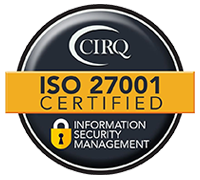Renee’s Takeaways – Get the scoop on L&E’s Qual Analysis and Insight Communication Webinar!
6 Steps to Perfect Qual Webinar Series Summary
Step 4 and 5 – Qualitative Analysis and Insight Communication Webinar – Webinar held on June 6, 2018
It’s going to be hard to top this one! In this recent webinar in our series, focusing on Qualitative Analysis and Insight Communication, we had the opportunity to chat with three extremely knowledgeable panelists on these topics. First up, Shaun Stripling who most recently left Mullen Lowe as Chief Strategy Officer, and was the Global Director of an insight consultancy called Frank About Women where she oversaw six countries of female-focused marketing efforts. Next, we had Walt Barron, Chief Strategy Officer at McKinney. Walt was a journalist in a previous life until he switched over to advertising about 19 years ago. He went to the VCU Brandcenter and has worked in agencies ever since. Last, but certainly not least, Joan Lewis. Joan started out with Procter & Gamble, doing everything from upstream innovation to brand work and advertising in media, along with partnerships with retailers. Most recently, she’s been doing Boards of Directors work for a variety of for-profit companies, including three companies in the research, insights and analytics industry. All of this experience in the industry totaling about 30 years!!
In this webinar, we focused on Q&A based around Qualitative Analysis and Insight Communication, tips to help make analysis easier for the researcher, and how to communicate insights to your clients in the most compelling and impactful way.
Here’s what our panelists had to say!
We started by asking our panelists to share about findings they’ve seen presented to them, as well as presenting findings to their clients. What sticks, and what kind of approaches are most compelling.
- Incorporate the use of multimedia to keep your presentation interesting
- If you can, put yourself in the consumer’s shoes. Immerse yourself in their experience, go through their exercise, walk through it the way they would. By doing this, not only do you have the data to share, but you have a unique perspective to share your insights.
- Try to tug on the heartstrings if you can, make an emotional connection with the consumer. That, coupled with powerful data, and you’ve got a real one-two punch!
We heard some great things from our panelists as far as what works, so we thought it would also be helpful to find out a few things not to do, and what they’ve found doesn’t work!
- Do not just plow through your insights! Take some time to consider the room dynamics, and be prepared to pivot on the fly based on that.
- DO NOT ever give your client a large, printed out report, they will never read it! Try putting the insights that you’ve shared at the end of the report, at the beginning. You’ll find that most people will then come on the journey with you, because now, they are intrigued.
- Don’t show 10 slides about your company background before getting to the insights. Save them for the end, and keep it minimal.
We covered some big picture items, then moved on to focus in on some of the smaller moving parts. Next, we asked about useful tools that help bring data to life.
- Assign pre-work. It can be a great way to jump past some of the necessary items you have to cover when you’re looking for consumer information and insights.
- Use tools such as social media listening tools, and the like. These tools can help pour through thousands of reviews and analyze them quickly to get to some rich insights.
- The use of video clips can enrich your story, hearing it directly from the consumer.
Next, we asked about best practices for delivering insights to clients.
- Try to dig deep into what the client already knows. That way, you are only delivering fresh insights, and not repeating what they’ve already heard.
- Maybe a little bit of a cheat, but write your hypothesis first. Then, either way, right or wrong, you’ll look for the data to prove it, and perhaps uncover some insights you didn’t expect.
- Have a conversation about what disproved your hypothesis, if that is the case. What did you hear that forced you to rethink?
We shifted direction a little bit, and went on to discuss a very common problem in delivering insights, confirmation bias. How do we reduce that effect with our clients?
- Ask your client right up front for permission to probe “the sacred cows.” Are they okay with you digging a little deeper and asking them to help with the “whys.”
- Try seeing your clients as partners, and seeing them as part of the team. This creates a comfort level with asking questions that may seem uncomfortable.
- Find your partner, or ally in the company or whoever is helping bring the work into the company. Very often, they are the ones who want the company to be more insight driven.
And last, we asked what happens to a qualitative report once it’s released “into the wild?” What kinds of report content and format follow it through the organization?
- Try to consider your presentation back to the client the beginning of the journey, instead of the end.
- Create a plan at the start to carry the report through the organization, beyond a presentation.
- Supply your client with leave-behinds, brochures, videos, things that get people engaged and can travel on their own.
We hope you found this summary to be helpful! If you didn’t register for this webinar you can listen to this webinar in its entirety, or download a free, transcribed version by clicking here.
Be on the lookout for our next webinar, which will be this fall. If you can’t wait until then, you can always view our on-demand webinars and learn about the latest technology solutions. Don’t forget to subscribe to our blog so you can keep up with what is happening at L&E!
Until next time!
Your Research Design Engineer at L&E,
Renee Wyckoff














